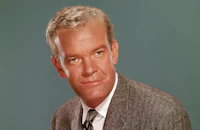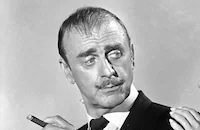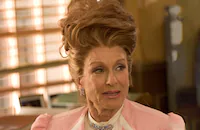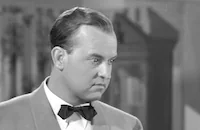The Chapman Report

Brief Synopsis
Cast & Crew
George Cukor
Efrem Zimbalist Jr.
Shelley Winters
Jane Fonda
Claire Bloom
Glynis Johns
Film Details
Technical Specs

Synopsis
Dr. George C. Chapman, a famous psychologist, and his assistant, Paul Radford, arrive in a Los Angeles suburb to conduct a survey on the sex habits of American women. After their first lecture on the project, four women volunteer as subjects. Sarah Garnell, a middle-aged wife and mother, is having an affair with a young theater director, Fred Linden. She decides to run away with him, but he rejects her, and she returns to her husband. Teresa Harnish, married to an art dealer, believes that they have a perfect relationship until she meets handsome football player Ed Kraski. When she discovers his rough aggressiveness, however, she turns back to the safety of her home. Naomi Shields, an alcoholic nymphomaniac, becomes involved with a jazz musician who allows his drunken friends to rape her at a party; she subsequently commits suicide. The fourth woman, Kathleen Barclay, a young widow who believes that she is frigid, breaks down during questioning and leaves the doctor's office. Paul traces her to her home and, by becoming personally involved, convinces her that her fears are unfounded. Dr. Chapman then reveals that the four cases are exceptions to the rule; most American marriages are happy ones.

Director

George Cukor
Cast

Efrem Zimbalist Jr.

Shelley Winters

Jane Fonda

Claire Bloom

Glynis Johns

Ray Danton

Ty Hardin

Andrew Duggan

John Dehner

Harold J. Stone

Corey Allen

Jennifer Howard

Cloris Leachman

Chad Everett

Henry Daniell
Hope Cameron

Roy Roberts
Evan Thompson
John Baer
Jack Cassidy

Grady Sutton
Alex Viespi
William Hummer
Pamela Austin
Jack Littlefield
Ray Foster
Fern Barry
Crew
Gene Allen
Gene Allen
Gordon Bau
Wyatt Cooper
George James Hopkins
Hoyningen-huene
Hoyningen-huene
Stanley Jones
Harold Lipstein
Don M. Mankiewicz
Orry-kelly
Sergei Petschnikoff
Jean Burt Reilly
Leonard Rosenman
Robert Simpson
Grant Stuart
James T. Vaughn
Darryl F. Zanuck
Richard D. Zanuck

Videos
Movie Clip



Trailer
Film Details
Technical Specs

Articles
The Chapman Report
The story comes from Irving Wallace's eponymous novel, a 1960 bestseller inspired by the enormous publicity and popularity accrued by the sexual studies of Dr. Alfred Kinsey and associates, published as Sexual Behavior in the Human Male in 1948 and Sexual Behavior in the Human Female in 1953. Like his real-life predecessor, the fictional Dr. George Chapman is conducting extensive research into the sexual habits, histories, and proclivities of the typical American woman. With his chief assistant, the young and dapper Paul Radford, he arrives in an upscale Los Angeles suburb called The Briars to conduct the last batch of interviews for his survey.
The members of a Briars women's association have volunteered to answer any and all questions posed by Chapman and Radford, reckoning that the impersonal nature of the interviews will make the sessions more amusing than embarrassing. The setup is simple: The scientist sits behind a screen, reading clinically phrased queries about everything from heavy petting to frequency of orgasms. But a tenacious critic of Chapman's methods - the skeptical Dr. Jonas, who figures far more prominently in the novel than in the movie - opposes the operation on two grounds: that reducing sexuality to mere behaviors and statistics is morally wrong, and that the interviews will stir up unruly emotions in psychologically insecure women. Sure enough, Chapman's arrival coincides with sex-related crises for at least four of his subjects. Therein lie the details - and the devils - of the sometimes comic, frequently melodramatic story.
Among the four troubled women, the most sympathetic is Sarah Garnell, played by Winters with admirable restraint and sensitivity. Bored stiff by her uneventful life and unexciting husband, Frank (Harold J. Stone), Sarah has struck up an affair with Fred Linden (Ray Danton), an idealistic theater director recently separated from Ruth (Hope Cameron), his discontented wife. Sarah yearns for the day when Fred will finalize his divorce and devote himself to her, but for now they're restricted to secret visits on the yacht he keeps moored at the local marina. It would be an overstatement to call Winters a minimalist actress, but she manages to convey more inner longing and conflicted emotion with a movement of the eyes or a tilt of the head than many performers can get across with their whole bodies. Her portrayal of Sarah reached the screen in the same year as her marvelous Charlotte Haze in the 1962 version of Lolita, and while Cukor's sprawling comedy-drama is far less memorable than Stanley Kubrick's masterpiece, Winters reaches impressive heights in both.
Bloom is equally impressive as Naomi Shields, a widow with unmanageable appetites for sex and alcohol. When she makes the acquaintance of Wash Dillon (Corey Allen), a jazz clarinetist fond of gambling and booze, it's obvious that misery is lurking just ahead. Bloom makes Sarah alluring, disheartened, and lonely to the point of madness, giving the movie some of its most affecting moments. In the contrasting role of ditzy Teresa Harnish, a poetry-spouting aesthete with a crush on dopey muscleman Ed Kraski (Ty Hardin), Glynis Johns pours on too many comic mannerisms for comfort, although her overacting may be a deliberate strategy to offset the movie's general moodiness. Jane Fonda musters little conviction as Kathleen Barclay, a widow whose late husband made her feel inadequate both in and out of bed, but the young star is great fun to look at, with silky-smooth skin and eyelashes galore.
Not surprisingly, the Production Code censors raised quite a ruckus over the prospect of a movie about sexologists practicing their profession, and right in Hollywood's backyard, to boot. At least five scribes were recruited to write, rewrite, or tinker with the screenplay, according to Patrick McGilligan's biography George Cukor: A Double Life, and Darryl F. Zanuck - whose son, Richard Zanuck, is credited as producer - did a final edit that satisfied the censors but nobody else. "Every time I got a new script," Winters said at one point, "the good stuff was taken out of it. By the time we got to the shooting script, there was nothing left of the original script I had read." Cukor was unhappiest of all. "The picture was delicate enough," he said in a phone call to Warner Brothers executives, but now it had been "hurt with the sledgehammer, ruthless and brutal...cuts [that] will be fatal and disastrous to the picture."
The Chapman Report is considerably better than Cukor's angry comments suggest, and the main reason is his canny directing of both the actors and the camera. Two scenes that were remarkably daring in the early 1960s - the awful moment when Sarah is gang-raped by Wash and his friends, and the amusing moment when Teresa gets Ed to pose for an almost-nude painting - are vividly conveyed without a single censorable frame. A fleeting shot of a bouncing ball on a tennis court tells all we need to know about Kathleen's solicitude for her aging father, and Cukor's eye for detail extends to the Kinsey-style earnestness that Chapman projects.
New York Times reviewer A.H. Weiler faulted the picture for seeming disengaged and "more prurient than scientific" at times, but even he acknowledged its "solid performances," with a special nod to Winters for the "touching and honest" scene when her husband takes her back after she has strayed. Thoroughly tame by today's standards, The Chapman Report offers an entertaining time-machine ride to an era when candor about sex was still edging its way, inch by cautious inch, into the Hollywood mainstream.
Producer: Darryl F. Zanuck, Richard D. Zanuck
Director: George Cukor
Screenplay: Wyatt Cooper, Don Mankiewicz (screenplay); Grant Stuart, Gene Allen (adaptation); Irving Wallace (novel)
Cinematography: Harold Lipstein
Music: Leonard Rosenman
Film Editing: Robert L. Simpson
Cast: Efrem Zimbalist Jr. (Paul Radford), Jane Fonda (Kathleen Barclay), Claire Bloom (Naomi Shields), Shelley Winters (Sarah Garnell), Glynis Johns (Teresa Harnish), Ray Danton (Fred Linden), Ty Hardin (Ed Kraski), Andrew Duggan (Dr. George C. Chapman), John Dehner (Geoffrey Harnish) Harold J. Stone (Frank Garnell)
C-126m.
by David Sterritt

The Chapman Report
Quotes
Trivia
Miscellaneous Notes
Released in United States 1962
Released in United States 1962














